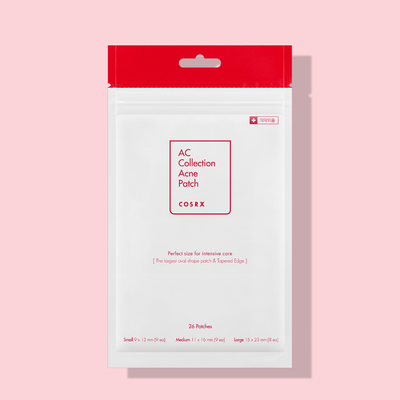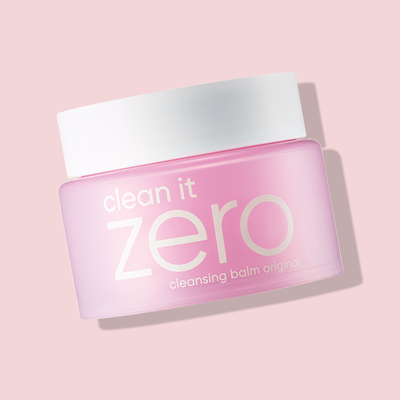The Different Types of Acne: A Guide to Breakouts
The Different Types of Acne: A Guide to Breakouts
Acne, pimples, zits, blackheads…. Ah, yes, breakouts. But did you know these all go under the heading, acne?
Acne is actually an umbrella term that encompasses a large variety of skin conditions or multifunctional diseases. It sounds a little scary, but these are most commonly known as blackheads, whiteheads, papules, pustules and so on.
What Causes Acne?
Acne most commonly occurs when pores become clogged with oils, sebum and dead skin cells. From here, oils can either build up in the pores causing them to enlarge or bacteria can enter them to irritate the deeper layers of the skin.
There are hundreds of factors that could be causing your breakouts from food intolerances to stress to lack of sleep and even hormone imbalances. The list will go on.
But in order to figure out your best action plan to tackle your skin concern, it will be helpful to identify which type of acne you have.
Non-inflammatory Acne: Comedones
Blackheads and white heads are your basic case of blocked pores, aka comedones. Anyone can get them, and good news: they’re pretty simple to treat too.
When the pores are exposed to bacteria or if they remain clogged, that’s when acne can form.

Whiteheads are closed at the surface and appear white-ish. Whereas blackheads are open at the surface and the exposure to oxygen causes the sebum and dead skin cells stuck in the pore or follicle to oxidise and turn a dark brown/black colour.
How to Treat Comedones
The most important step in treating ANY form of acne is cleansing!
Make sure to remove your makeup and sunscreen with an oil-based cleanser then ALWAYS, and when I say always, I mean religiously follow up with a water-based cleanser! These are more commonly known as foaming cleansers.
My reason for this is:
Although oil-based cleansers do a decent job at melting away any makeup on the surface of the skin, they aren’t as effective in getting into your tiny pores to rid of any residue. Foaming cleansers on the other hand are designed to dislodge and remove dirt and excess oils, any remaining makeup and dead skin cells to prevent them from accumulating inside our pores.
Popular oil-based cleansers include Banila Co’s Clean It Zero Cleansing Balms which come in four different versions made for different skin types. The Original is suitable for all skin types, the Nourishing one is suitable for dry skin, the Revitalising one is suitable for oily skin types and the Purifying one is suitable for sensitive skin types. The Face Shop’s Rice Water Bright Cleansing Oils is another popular oil cleanser where the ‘Light’ version is ideal for oily skin types and the ‘Rich’ version made for drier skin types.
A popular foaming cleanser for acne-prone skin is the COSRX AC Collection Calming Foam Cleanser as it contains 0.5% Salicylic Acid and Centella Asiatica to improve and heal acne damages. The COSRX Low pH Good Morning Gel Cleanser is a lighter cleanser formulated with tea tree oil and natural BHAs to refine the skin. As its name suggests, it’s suitable for the morning as it leaves your skin soft, moist and refreshed without being stripped of its natural oils.
Once your skin is clean and free of dirt or bacteria, you can use over-the-counter* skincare products. You want to look for chemical exfoliants like AHAs such as glycolic acid and lactic acid, and BHAs such as salicylic acid. These ingredients help to gently dissolve dead skin cells and draws oils from deep within our skin to unclog existing pores as well as to prevent new ones from forming.
*over-the-counter means it’s not prescribed by a dermatologist or aesthetician
Inflammatory Acne
Inflammatory acne is often a flushed pink/red colour and swollen. They occur when our pores stay clogged or bacteria infects and causes irritation in the deeper layers of the skin. They are often tender to the touch and can be more stubborn when we try to treat them.
Papules and Pustules
These are the more common forms of acne.
Papules and pustules form when the blackhead or white head cause too much irritation on the walls surrounding the pores and hair follicles that they damage the skin and cause inflammation.
Papules appear as small solid bumps under the skin’s surface and the skin surrounding the papules are often red, inflamed and sensitive to the touch.
Pustules on the other hand are slightly larger, with a clear centre filled with yellowish pus. The base of a pustule and the skin surrounding a pustule can also appear to be red and swollen.
How to treat Papules and Pustules
Once again, cleansing is the key!
Keeping your skin clean and free of bacteria can prevent infections and inflammations. As mentioned previously, products containing Salicylic Acid will help to dissolve excess oils, sebum and prevent further clogging so all the previous recommendations apply. Benzoyl Peroxide is another great ingredient as not only does it help reduce excessive sebum production but also fights bacteria.
Propolis isn’t as widely talked about, however, it also holds antibacterial and anti-inflammatory properties that soothes and cools the temperature of the skin in order to effectively diminish acne and reduce redness of the skin.
Products you can implement into your current routine include the COSRX Propolis Synergy Toner. This essence-like toner contains 72.6% Propolis Extract and 10% Honey extract to heal blemishes to reveal smooth and glowy skin.
Nodules and Cysts
Nodules and cysts are more severe forms of acne and are often fairly painful.
Nodules are quite deep set in the skin, quite swollen and firm to the touch. Nodules occur when the wall of the hair follicle or pore ruptures and the contents which were clogging the pore enters neighbouring pores and follicles, contaminating them and causing more inflammation. It’s almost as if one nodule is contagious and passing on the infection.
Cysts form in the same way as nodules but are far more severe and are usually the result of an infection. They are a lot more painful and rather than just being filled with pus, they often contain pus and blood and are soft to the touch. They can be both superficial or deep and are generally quite large.
How to Treat Nodules and Cysts
1. Thorough cleansing
2. Gentle chemical exfoliating
3. Soothing ingredients such as Centella Asiatica, Aloe Vera and Propolis
These three factors will reduce the severity of the acne BUT it’s still highly recommended that you see a dermatologist or a licensed aesthetician before starting to use any ‘over-the-counter’ treatments. Timely treatments by dermatologists are your best shot at healing more severely infected acne as well as reducing scarring for the future.
The BENTON Aloe Propolis Soothing Gel is a great lightweight moisturiser for the mornings and is suitable for combination to oily skin types. As the name suggests, it contains Aloe Vera Extract as well as Propolis Extract which is great for soothing and reducing inflammation.
Similarly, the COSRX AC Collection Lightweight Moisturiser is formulated with similar focus ingredients but has a much higher concentration of Propolis Extract than Aloe Vera Extract. Additionally, it contains other benefits from Centella Asiatica and has a thicker consistency that it can be used as both a day and night cream.
Otherwise, if your skin just prefers Centella, the BENTON Centella Goodbye Redness Gel or the PURITO Centella Green Level Recovery Cream are available as options too. Spot treatments are also highly recommended as they are typically heavily concentrated with Centella Asiatica. COSRX, I’m From, Benton and The Face Shop all have their own versions of spot treatments.
A few common treatments given by dermatologists include various prescribed topical medications like antimicrobial or retinoid creams. It is also quite common to receive a prescription for oral medications. These are antibiotics like tetracycline and doxycycline which help to treat moderate to severe forms of acne by targeting bacteria and reducing inflammation in the skin.
Contraceptives are also quite commonly used today to reduce hormonal acne in females. You might hear about Spironolactone which is an anti-androgen hormone pill and Isotretinoin which is a high dose prescription of vitamin A, both which adjusts the hormones in the body to reduce flareups.
Patience is Key!
While some treatments have almost immediate results, some treatments can take months to show any signs of improvement. Then again, layering too many acne treatments on your skin can also have adverse effects!
It may cause your skin to dry out or even make it more sensitive… And please refrain the urge to pop and pick at your pimples! This is where the bacteria comes into play as well with your dirty, bacteria-filled fingers. Not only will picking at your pimples increase the irritation and inflammation, it also risks causing an infection. We don’t want to jeopardise our skin any further at this point.

One Last Tip: Don’t mistake ‘bumps’ and ‘swelling’ for acne!
There are many different skin conditions that can look similar to acne but are actually not. These include milia, keratosis pilaris, heat rashes, and even rosacea but that’s a whole another story. So, if ever in doubt, just get a professional’s opinion first before trying to figure out your action plan! It saves time on pondering what’s going on with your skin and in the long run, can save a lot more money on skincare more suited to your skin.
Meet The Team

Daphne Shi
K-Beauty Editor

Keina Yuan
K-Beauty Editor



















Leave a comment